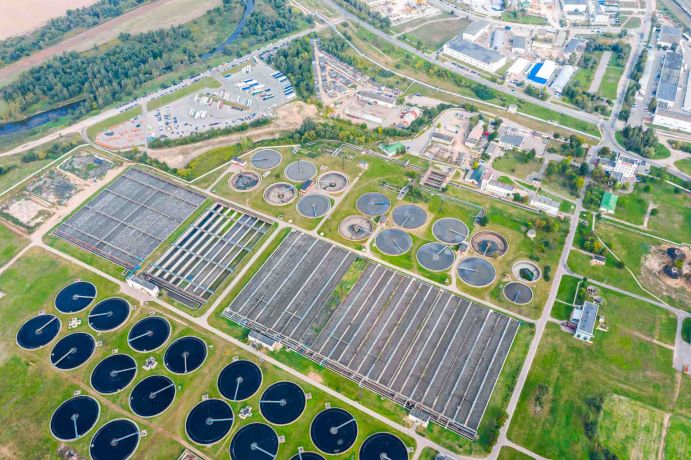Action 20: Recycling phosphorus: Reusing waste streams, recovering resources
We will secure the future supply of phosphorus by recovering it from wastewater and sewage sludge.
Where do we stand?
Intensive agriculture has led to phosphorus deficiency in arable soils. In order to maintain agricultural yields at a high level, phosphorus must be returned to the fields through fertilisation. One way to address phosphorus deficiency is to recover phosphorus from wastewater and sewage sludge. The phosphorus must first be recycled from the sewage sludge. If this does not happen and sewage sludge is fertilised directly, the soil will also become heavily polluted with substances such as heavy metals or multi-resistant germs. The Federal Government has therefore embedded the expansion of phosphorus recycling in the German Resource Efficiency Programme and created the legal framework by amending the Sewage Sludge Ordinance. Consequently, the recovery of phosphorus contained in sewage sludge is strictly required for larger municipal sewage treatment plants, and fertilisation with sewage sludge is prohibited. However, the implementation of phosphorus recovery entails high costs, which will have to be primarily borne by consumers via the water tariff. In order to keep the additional burden on bill payers as low as possible, solutions that are as economical as possible are therefore required.
What are the research needs?
The complex process of phosphorus recovery and the high costs entailed are the biggest obstacles to date to the implementation of the new Sewage Sludge Ordinance. In order to make the right investment decisions at regional level, decision-makers need scientifically sound knowledge and practical experience. These can only be obtained through the large-scale implementation of various phosphorus recovery processes. However, these technologies must not be considered in isolation, but must be part of a holistic regional phosphorus recycling and sewage sludge reuse concept. In this way, they can serve as a model for other regions with similar conditions.
Implementation steps and milestones
- We are funding innovative regional approaches to economic and sustainable phosphorus recycling and sewage sludge reuse and will start implementing previously developed concepts in 2020. Demonstration sites for industrial-scale implementation of various phosphorus recovery technologies are expected to be established by the end of 2025.
- With the help of long-term funding from 2020 onwards, we want to show how the entire value-added chain can be included in order to return the recovered phosphorus to the nutrient cycle via agriculture or to industry as a raw material.
Last updated on




